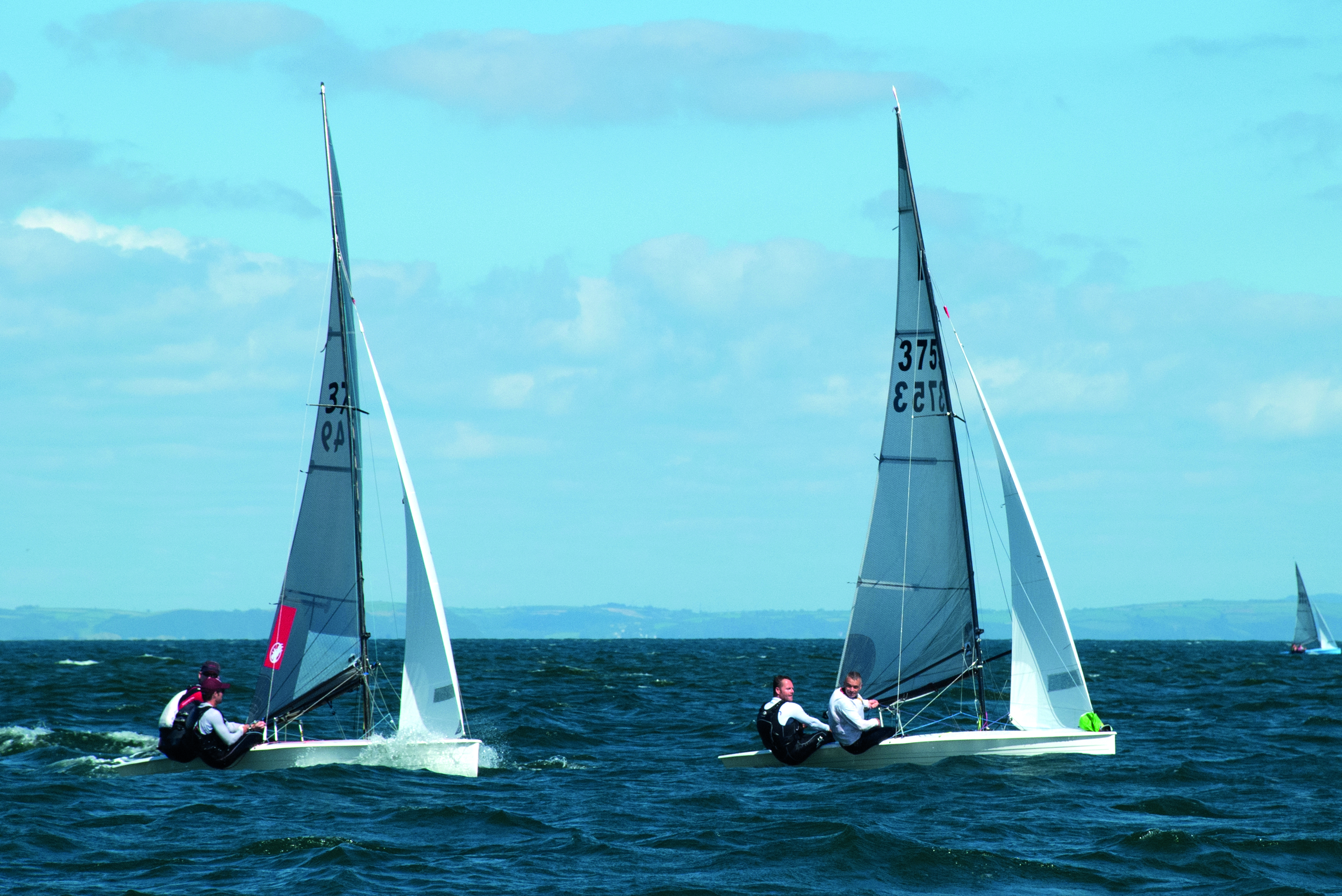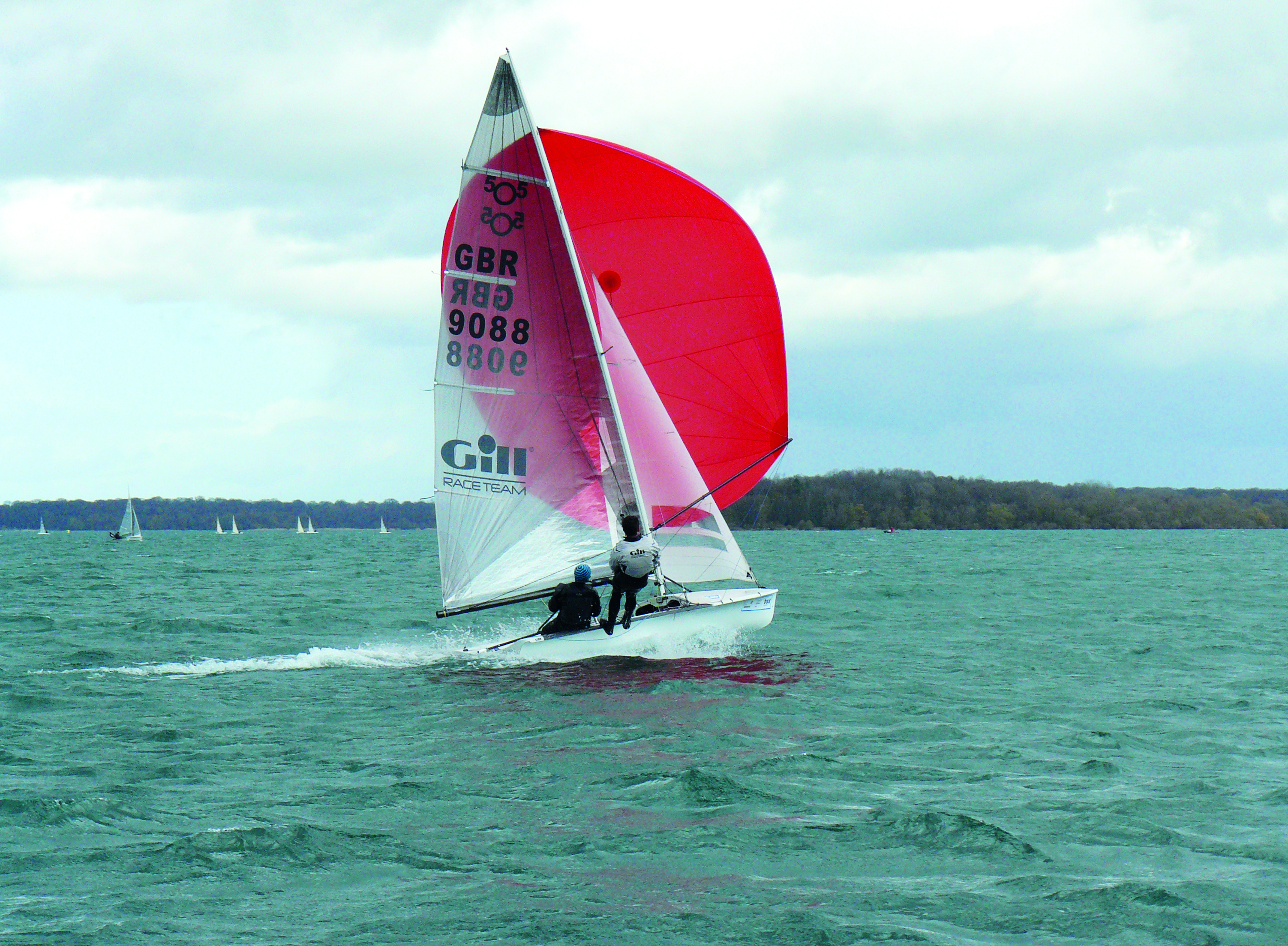Common Boatspeed Problems With Ian Pinnell
Book Extract
COMMON PROBLEMS
Despite your best efforts, you may find that you’re slow in certain conditions. I hope the following will help you get back on track.
1. You point ok but are slow
This is probably caused by the leech of the main and / or the jib being too tight. Also, the sails may be too full and the slot may be too closed.
- Make sure you haven’t over-sheeted the jib or the main. If you let out the mainsheet you may need to raise the traveller to windward to centre the boom.
- Have a look at the mast bend fore and aft. It may be too straight. Remove chocks from in front of the mast (or loosen the strut). If that doesn’t help, rake the spreaders aft a little. The top telltale on the leech of the main should just break.
- Tighten the cunningham(s) to bring the flow forward.
- Tighten the outhaul.
- Check the mast rake. It’s probably too upright.
- Also sight up the mast to make sure the mast is not bending to leeward in the middle. If it is, the slot will close. Increase rig tension. If this doesn’t help, shorten the spreaders.
- Check the centreboard. It may be down too far.
2. You can’t point, but are fast
The leeches are probably too slack. The top leech telltale on the main should be streaming correctly, i.e. in flat water it should be stalling 60% of the time, in chop it should be stalling 40% of the time.
- Is the mast over-bent? If there are creases (from the clew to the middle of the mast), this is probably the case. Add more chocks in front of the mast (or tighten the strut). Rake the spreaders further forward.
- Check for sideways bend. If the mast is bending to weather in the middle, shorten the spreaders or increase rig tension.
- If the luff of the jib is too full it will stop you pointing. Increase rig tension to prevent luff sag. If necessary, you may have to get the sailmaker to re-cut the jib luff.
- Ease the outhaul.
- Put the centreboard down more. Make sure the centreboard is stiff enough. Check that it is tight in the case.
- Move the jib fairleads inboard.

If you can’t point, tighten the leeches
3. You are low and slow
Resist the temptation to give up! Something major is wrong. Do the obvious things first – heel the boat and check for weed, make sure the slot gasket is in place and the centreboard is ok. Then look aloft – has something broken or fallen off?
Is this a new problem? If you were fast before, what could have changed? Is everything on the right setting for today’s conditions?
Are you slow on both tacks? If not, then your set up is wrong. When ashore, go through the set up systematically, as described in The Initial Set-Up and Refining The Set-Up. Hopefully you will find that something is out of kilter and can correct it.
If you have no luck you may have to approach an expert in the class to have a look at your boat, and perhaps sail it to understand the issues.
4. You are slow on the reach
- You need full sails so straighten the mast.
- Let off the vang a bit and ease the cunningham and outhaul (so the lens foot operates).
- Ease the sheets. It’s always better to sheet out too much than to be over-sheeted. Trim the jib to the middle pair of telltales.
- Check your body position(s). In light airs you may need to move further forwards.
- Try raising the centreboard more.
- Sail the boat flat, to reduce weather helm.
- Make sure the spinnaker pole is in line with the boom, and the clews of the sail are level.
- Consider the weight of the boat and of the crew. If you are giving a rival 20 kg, they are bound to be faster.
- On a close reach in a breeze tighten the cunningham and the outhaul. Let off the vang. Ease the jibsheet.
- Did you plan ahead and set your smaller, flatter spinnaker?

You need full sails on the reach
5. You are slow on the run
- Check your position in the boat. You may need to be further forward.
- Sail the boat flat. In light airs you may need to heel to windward or to leeward to reduce wetted area.
- Ease the sheets.
- Let off the vang and cunningham.
- Pull on the outhaul to give maximum area.
- Push the centreboard up more.
- Reduce the mast rake by easing the shrouds so it is upright or even further forward (see photo,
- below).
- Ease the spinnaker and square it round as much as possible. Check that your spinnaker is as large as the rules allow.

On the run the mast should be upright or even raked forward, as in the Star
6. You have trouble starting
The key is to set up the boat for the first beat, preferably on a tuning beat with your buddy. Try not to alter these settings in the pre-start period, though you may have to ease the vang if you need to stop the boat. Be sure to have pulled it on again before you sheet in to blast off the line – it’s the vang that makes the boat accelerate.
If you are worried about pointing, set up with slightly tighter leeches, a slacker outhaul and a bit more power in the sails. Sheet the jib a bit tighter and tighten the vang a tad. Once you have space to leeward, revert to the settings from your tuning beat.
7. You set up the rig for light airs but the wind has increased
You need to rake the mast back and bend it. If you have an adjustable rig, rake the mast by letting off the jib halyard / forestay and tightening the shrouds. If your controls are limited simply let off the jib halyard / forestay a small amount. Then:
- Remove chocks from in front of the mast (or let off the strut).
- Raise the centreboard (or daggerboard).
- Pull on the vang and cunningham to flatten and twist the main.
- Move the jib fairleads aft.

If you’re set up for light winds and it gets up, rake the mast back
8. You set up the rig for heavy airs but the wind has dropped
You need to make the mast more upright and straighten it. Let off the shrouds a little and tighten the jib halyard / forestay, to rake the mast forward. If your controls are limited simply tighten the jib halyard / forestay a bit.
- Insert chocks in front of the mast (or tighten the strut).
- Let off the vang a bit and let off the Cunningham completely.
- Ease the outhaul.
- Push down the centreboard.
- Move the jib fairlead forward.

If the wind drops, move the mast more upright
9. You are slow in chop
You need more power, so set the sails fuller and with more twist. Increase crew weight!
- Straighten the mast.
- Drop the boom a little to leeward to give drive through the chop.
- Raise the centreboard a little.
- Move your weight aft a little.
- Don’t pinch, foot more.
- Make quick rudder movements / focus on steering the boat over the waves.
- Keep moving the mainsheet in and out all the time.
10. You are slow in waves
Set up for the lighter wind in the troughs. In other words, power up. Steer subtly. Luff going uphill, bear away downhill. Move your body weight back going uphill, forward downhill.
11. You are slow in gusty winds
Your objectives are to keep the boat flat and to stop the sails backwinding:
- Set up with slightly less vang than usual.
- Raise the centreboard a little.
Watch for a gust arriving. As it hits, feather the boat to windward a little, letting out the main and jibsheets. These precautions will keep the boat flat, prevent the wind getting under the hull and keep the boat moving.

In gusty winds, keep the boat flat
© Not to be reproduced without written permission from Fernhurst Books Limited.
Tuning to Win is written by multiple champion, sailmaker and chandler Ian Pinnell.